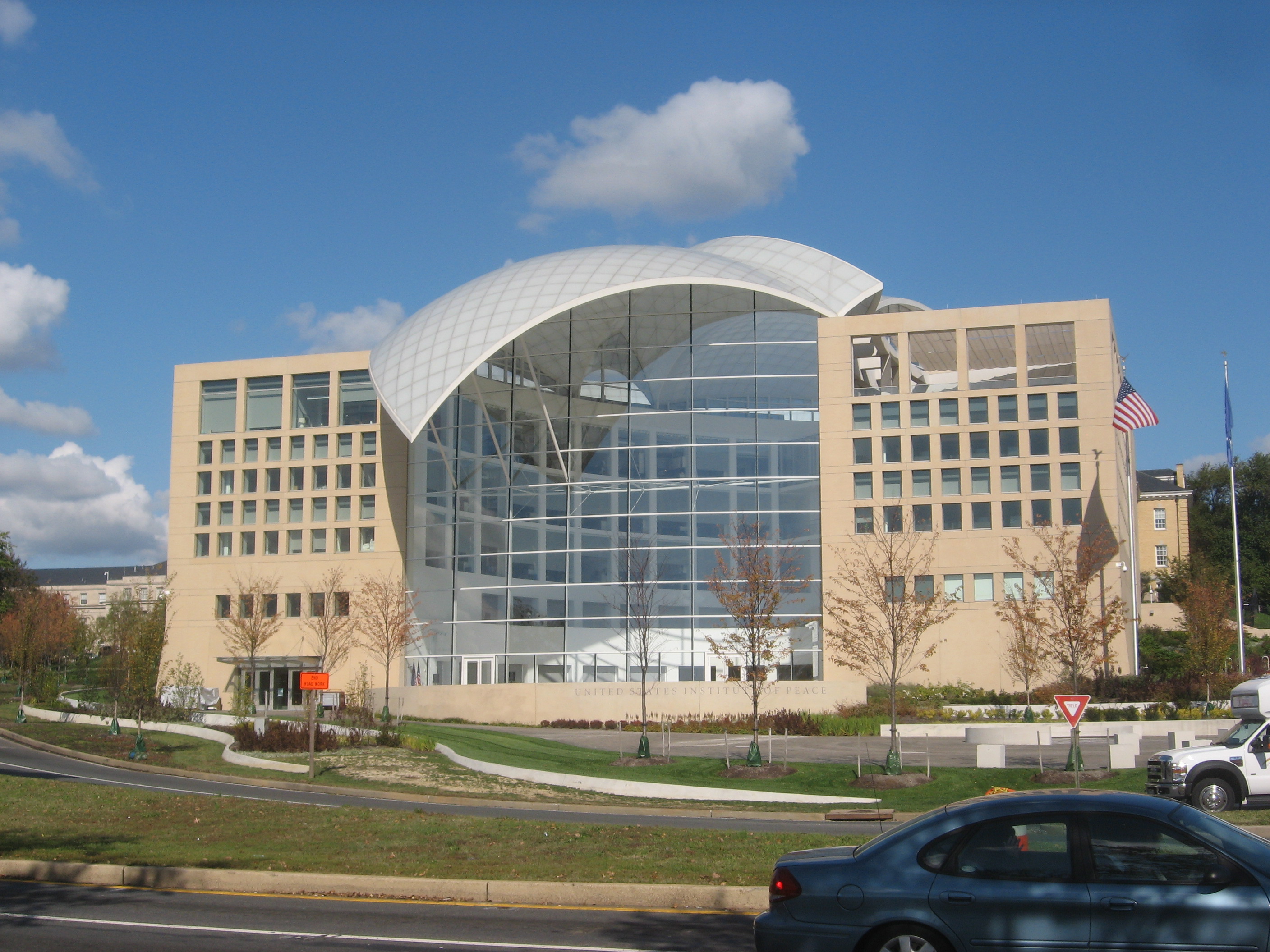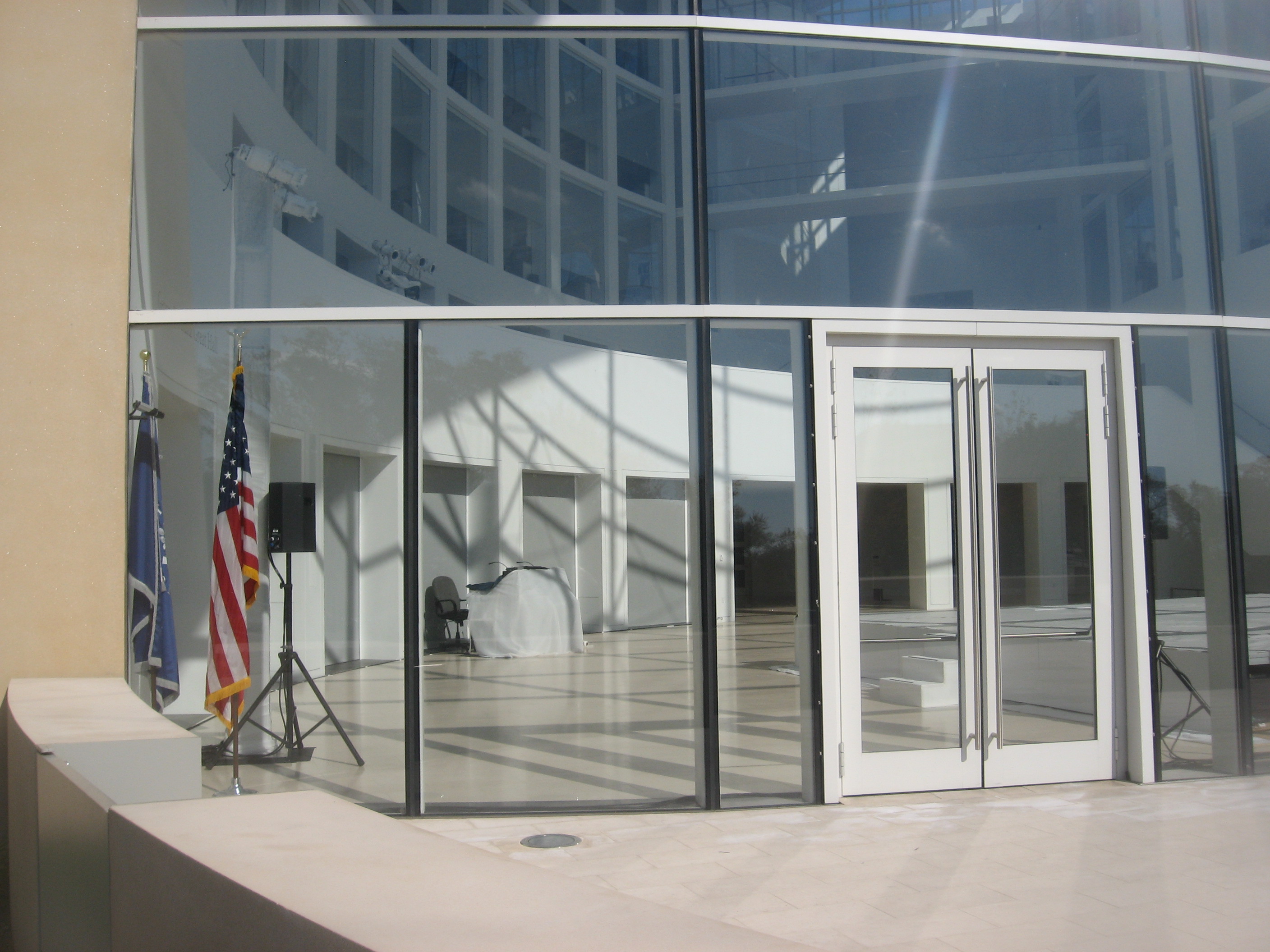
| Moshe Safdie [b.1938] |

| Moshe Safdie [b.1938] |
"Moshe Safdie, CC, FAIA (born July 14, 1938) is an Israeli/Canadian/American architect, urban designer, educator, theorist & author. He is most identified with Habitat 67, which paved the way for his international career... Among the projects he has designed in Jerusalem are Yad Vashem & the Alrov Mamilla Quarter, which includes the Mamilla Mall, David's Village luxury condominiums & the 5-star Mamilla Hotel. In 1978, after teaching at McGill, Ben Gurion & Yale universities, Safdie moved his main office to Boston & became director of the Urban Design Program at Harvard University's Graduate School of Design... Safdie has designed six of Canada's principal public institutions - including the National Gallery of Canada in Ottawa & Vancouver Library Square - as well as many other notable projects around the world, including the Salt Lake City Main Public Library; the Khalsa Heritage Centre in Punjab (India); the Marina Bay Sands integrated resort in Singapore; the United States Institute of Peace Headquarters in Washington, DC; the Kauffman Center for the Performing Arts in Kansas City, Missouri; and the Crystal Bridges Museum of American Art in Bentonville, Arkansas."


1967 - Habitat 67, 2600 Avenue Pierre-Dupuy on the Marc-Drouin Quay, Montreal, Quebec (Canada). "Next to the Saint Lawrence River. A model community & housing complex designed by Israeli/Canadian architect Moshe Safdie. Originally conceived as his master's thesis in architecture at McGill University & then built as a pavilion for Expo 67, the World's Fair held from April to October 1967. Habitat 67 is widely considered an architectural landmark & one of the most recognizable & significant buildings in both Montreal and Canada."


S C U L P T U R E 1976 - Children's Memorial, Yad Vashem, Jerusalem (Israel). Designed by Moshe Safdie. Two different clusters of white pillars. The lower cluster leads to an underground cavern (right image). "A tribute to the approximately 1.5 million Jewish children who perished during the Holocaust. Walking through the [cavern in the dark], visitors hear the names of murdered children, their ages & countries of origin in the background." When they emerge into daylight, they are immediatly confronted with a view of Deir Yassin on the other side of Jerusalem Forest.




T
R
AI
N1990 - Cattle car, Yad Vashem, Jerusalem (Israel). Sometimes called "Auschwitz Wagon." "Used by Nazis to transport Jews to death camps. Given to Yad Vashem by Polish authorities. Now part of a memorial designed by Moshe Safdie, it sits on a severed railroad track jutting out over the slope of a hill, suspended between heaven & earth." Inscribed on on railing is poem "written in pencil in the sealed railway car" by Dan Pagis: "here in this carload / I am Eve / with Abel by son / if you see my other son / cain son of man / tell him I"




VISITORS CENTER 2005 - New Visitors Center, Yad Vashem, Jerusalum (Israel). "Architect - Moshe Safdie. Donor - David & Fela Shapell. Entrance level serves as a place of orientation, information, reception & gathering. Opens in all directions to views of the campus & surrounding landscape. On the floor below, open to the view of the valley, are visitor services, a cafeteria, restrooms & checkrooms. Below this are the parking levels." Note nearby residential community in the right image.





M U S E U M March 15, 2005 - Holocaust History Museum (EXTERIOR), Yad Vashem, Jerusalem (Israel). Designed by Moshe Safdie of Somerville, Massachusetts (USA). A prism-like triangular structure 180 meters long, in the form of a spike, which cuts directly through the mountainside. Visitors enter the museum near ground level. The sky and sunlight are readily visible through a skylight. /// "The only new building not following the mandate that Jerusalem stone be used. The reason is that the Shoah is not an Israeli experience; it is an out of Israel experience and thus should be made with 'out of' Israel material." Click here for detailed description.

M U S E U M March 15, 2005 - Holocaust History Museum (INTERIOR), Yad Vashem, Jerusalem (Israel). "Nine underground galleries tell the story of the Shoah from the point of view of the Jews. The chronological & thematic narrative is punctuated by a look into the worlds of Jews who lived - and died - under the Nazis and their collaborators. The exhibits incorporate a wide variety of original artifacts, testimonies, photographs, documentation, art, multimedia & video art." /// "Yad Vesham is a landscape in remembrance of the heroes and lost lives of the Holocaust; and evolved over a series of generations. The different buildings plotted in the landscape are designed to follow the communities ideology adopted at the time. Initially, the buildings’ designed, in the 1970's and until the mid 1980's, signified and glorified fighters and heroes. Starting from the late 1980's, the communities ideology shifted to denote respect for the losses of life and perception of survivors’ trauma... Single file movement, forced by a tight space, concept is used in two different ways in Yad Vesham. The inscribed diameter of the prism like main museum circulation path narrows at the darkest point of the path. Also, In the children's museum, the entrance is through a small door and then bunker like tunnels, leading to a dark room. Due to the circulation path this subconsciously communicates solitude. In addition, the inability to clearly see ahead, where view is blocked by the visitors ahead, gives a sense of apprehension of the unknown destination."


H
A
L
L2005? - Hall of Names, Yad Vashem, Jerusalem (Israel). When dedicated? Same time as the new history museum? "At the end of the Holocaust History Museum. A memorial to the 6 million Jews who perished in the Holocaust. The main hall is composed of two cones: one ten meters high, with a reciprocal well-like cone excavated into the underground rock, its base filled with water. On the upper cone is a display featuring 600 photographs of Holocaust victims and fragments of Pages of Testimony." /// "Computerization of the Pages of Testimony collection commenced in 1992, and has subsequently evolved into The Central Database of Shoah Victims’ Names, which contains additional names identified from various archival sources. In November 2004, the entire Names Database was uploaded to the Yad Vashem website at www.yadvashem.org where one can freely access information on the over 3 million Jewish victims identified so far, as well as submit additional names & information online."

D
OV
E
March 22, 2011 - Amsary Peace Dove, US Institute of Peace (USIP), Constitution Avenue at 23rd Street, NW, Washington, DC (USA). "Between the Lincoln Memorial & Capitol & passing by the Kennedy Center stands the USIP with its white roof that evokes the wings of a dove. Visible as a dove only from above. World's largest peace dove? The structure has been named after Hushang Ansary, the [Iranian-American] philanthropist & business leader from Houston, Texas." By coincidence, the monument was inaugurated by President George HW Bush at exactly the time US warplanes had started bombing Libya on orders from the incumbent Barack Obama. At a ceremony the following night, all four former presidents still living were present. The guests might have remembered that, in one way or another, all four had been involved in wars. In fact, all 44 men who have served as US president so far have been involved in at least one war."




M
U
S
E
U
M
December 2012? - Global Peacebuilding Center (GPC), US Institute of Peace (USIP), 23rd Street & Constitution Avenue, NW, Washington, DC (USA). Formerly called Public Education Center (PEC). Official ground breaking for new USIP headquarters building took place June 5, 2008 -- 24 years after the creation of USIP. Building opened in 2011. It includes a training center for professional conflict managers, conference space for public & private meetings & office space for USIP staff. But 20,000 square fee space for PEC remains empty (as seen in first two images made Nov. 1, 2011). Entry #1169 in the "Peace Movement Directory" by James Richard Bennett (2001). Discussed by Tom Flores (2008). Click here for the Wikipedia article.



2014 - Insuksuit, Terminal 1, Lester B. Pearson International Airport, Toronto, Ontario (Canada). Outside departures entrance. N.B.: Lester B. Pearson [1897-1972] received the Nobel Peace Prize in 1957. Terminal designed by Moshe Safdie (qv) who also designed the US Institute of Peace in Washington, DC (USA), & Holocaust Museum at Yad Vashem, Jerusalem (Israel).
Please email your comments & questions to geovisual at comcast.net. Thank you.